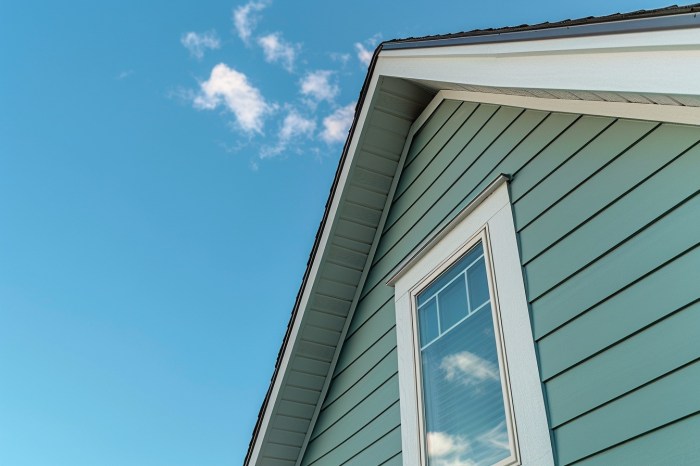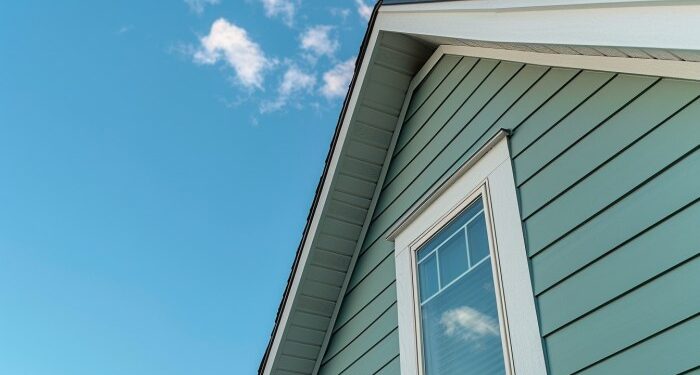Exploring the relevance of Aluminum siding in 2025, this article delves into its history, benefits, and considerations, offering a comprehensive view of its value in the current market.
The following paragraphs will provide detailed insights into the key aspects of Aluminum siding, shedding light on its durability, cost-effectiveness, environmental impact, maintenance requirements, and design options.
Aluminum Siding Overview
Aluminum siding has been a popular choice for exterior cladding on homes for many years due to its durability and low maintenance requirements. Let's take a closer look at the history, pros and cons, as well as how it compares to other siding materials in terms of longevity and upkeep.
History and Evolution of Aluminum Siding
Aluminum siding first gained popularity in the 1940s as an alternative to traditional wood siding. Its lightweight nature and resistance to rust and corrosion made it a practical choice for homeowners looking for a durable and long-lasting exterior cladding option.
Over the years, advancements in manufacturing processes have improved the quality and appearance of aluminum siding, making it a versatile and stylish choice for modern homes.
Pros and Cons of Aluminum Siding
- Pros:
- Durable and long-lasting, with a lifespan of up to 50 years.
- Resistant to rust, rot, and insect damage.
- Low maintenance requirements, only needing occasional cleaning.
- Lightweight and easy to install.
- Available in a variety of colors and styles to suit different architectural designs.
- Cons:
- Prone to dents and scratches, especially in areas with high winds or hail.
- Can fade or chalk over time, requiring repainting or recoating.
- Not as energy-efficient as other siding materials, leading to potential heat loss.
- More expensive upfront compared to vinyl or fiber cement siding options.
Comparison with Other Siding Materials
When it comes to durability and maintenance, aluminum siding holds its own against other popular siding materials like vinyl and fiber cement. While it may require more upkeep in terms of repainting or recoating, its longevity and resistance to elements make it a solid choice for homeowners looking for a reliable and low-maintenance exterior cladding option.
Cost Considerations
When considering aluminum siding for your home in 2025, it is essential to take into account the initial installation costs, long-term cost benefits, and any cost-saving measures or alternatives available.
Breakdown of Installation Costs
Installing aluminum siding can cost between $5 to $10 per square foot, depending on the quality of the material and the complexity of the installation process. Additional costs may arise for insulation, trim work, and labor fees, which can add to the overall expenses.
Long-term Cost Benefits
- Aluminum siding is known for its durability and low maintenance requirements, reducing the need for frequent repairs or replacements over time.
- Its resistance to rust, corrosion, and fading ensures a longer lifespan compared to other siding materials, ultimately saving money on maintenance and replacement costs.
- Aluminum siding is also energy-efficient, providing better insulation for your home and potentially lowering heating and cooling bills in the long run.
Cost-saving Measures and Alternatives
One cost-saving measure for aluminum siding is to opt for pre-finished panels, which eliminate the need for painting and reduce maintenance costs over time. Additionally, exploring different brands and suppliers can help find competitive prices without compromising on quality.
Environmental Impact
When considering the environmental impact of aluminum siding production, it is important to note that the extraction and processing of aluminum can be energy-intensive and contribute to greenhouse gas emissions. However, aluminum is a highly recyclable material, which can help mitigate some of these environmental concerns.
Sustainability Comparison
Comparing the sustainability of aluminum siding with other siding materials, aluminum stands out for its recyclability. Unlike vinyl or wood siding, aluminum can be recycled repeatedly without losing its quality. This means that aluminum siding has the potential to have a lower environmental impact over its lifecycle.
Recycling Options
- Aluminum siding can be recycled at specialized facilities that accept scrap metal.
- Recycling aluminum siding helps conserve natural resources and reduce energy consumption compared to producing new aluminum.
- Many scrap metal yards offer aluminum recycling services, making it relatively easy for homeowners to dispose of their old aluminum siding in an environmentally friendly manner.
Maintenance and Durability
Maintaining aluminum siding is relatively easy compared to other types of siding materials. Regular cleaning with a mild detergent and water can help prevent dirt and grime buildup. Additionally, inspecting for any dents, scratches, or chipped paint can help address any issues before they worsen.
Maintenance Requirements
- Regular cleaning with mild detergent and water
- Inspecting for dents, scratches, and chipped paint
- Repainting as needed to prevent corrosion
Durability in Different Weather Conditions
Aluminum siding is known for its durability in various weather conditions. It is resistant to rust, rot, and insects, making it ideal for regions with high humidity or extreme temperatures. However, aluminum can dent easily, especially in areas prone to hail or falling debris.
Tips for Extending Lifespan
- Regularly clean and inspect for damage
- Repaint as needed to protect against corrosion
- Install a vapor barrier to prevent moisture buildup
- Trim trees near the siding to avoid damage from branches
Aesthetics and Design
When it comes to aluminum siding, aesthetics and design play a crucial role in enhancing the overall look of a property. The different styles and finishes available can greatly impact the curb appeal of a home.
Styles and Finishes
- Traditional Lap Siding: This style mimics the look of traditional wood siding but with the added benefits of aluminum, such as durability and low maintenance.
- Vertical Panels: Vertical siding can add a modern touch to a home, creating a sleek and contemporary appearance.
- Shake or Shingle Siding: This style replicates the look of cedar shakes or shingles, providing a rustic and charming aesthetic.
- Smooth or Textured Finishes: Aluminum siding is available in smooth or textured finishes, allowing homeowners to customize the look of their property.
Choosing the Right Color and Design
When selecting the color and design of aluminum siding for your home, consider the architectural style of the property, the surrounding landscape, and your personal preferences. Here are some tips to help you choose:
- Take inspiration from the existing elements of your home, such as the roof color, trim, and landscaping.
- Consider the overall aesthetic you want to achieve - whether it's classic, modern, or rustic.
- Opt for colors that complement the style of your home and blend well with the neighborhood.
- Sample different colors and finishes on a small area of your home to see how they look in different lighting conditions.
Enhancing Curb Appeal
Aluminum siding can significantly enhance the curb appeal of a property by adding visual interest and character. Its versatility in styles and finishes allows homeowners to create a unique and attractive exterior. Additionally, the durability and low maintenance of aluminum siding ensure that the property looks great for years to come, making it a worthwhile investment in enhancing the overall aesthetic of a home.
Final Summary

In conclusion, Aluminum siding remains a viable option in 2025, offering a blend of practicality and aesthetics for homeowners. As advancements continue in the industry, embracing Aluminum siding can prove to be a valuable investment for years to come.
FAQ Overview
Is Aluminum siding prone to dents and scratches?
Aluminum siding is durable and resistant to dents and scratches, making it a practical choice for homeowners seeking longevity in their exterior cladding.
Can Aluminum siding be painted to change its color?
Yes, Aluminum siding can be painted to alter its color, providing homeowners with flexibility in customizing the look of their homes.
Is Aluminum siding environmentally friendly?
While Aluminum production has environmental implications, Aluminum siding is recyclable and can contribute to sustainable building practices when properly managed.
How often does Aluminum siding need to be repainted?
On average, Aluminum siding may need repainting every 5-10 years, depending on the climate and maintenance practices.



